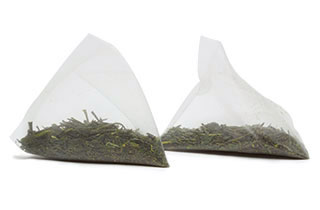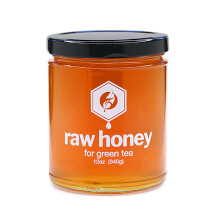94
gyokuro
based on 874 reviews
Gyokuro, a shade-grown steamed green tea, is among the finest of Japanese teas. While the young leaves of the spring season develop, the Gyokuro plants are shaded from the sun for several weeks. This slows the growth allowing tea leaves more time to develop depth and flavor. The sun-deprived leaves are higher in chlorophyll, which explains their vivid green color. They're also higher in amino acids, most notably L-theanine, which accounts for the perfectly smooth, rich and soft flavor. Our fine Gyokuro green tea produces a deeply sweet aroma of freshly buttered greens and seaweed, with no grassiness or harshness. Think of tender new grass just sprouting in the spring. Soft on the palate with a balanced, delicate finish. Energizing and soothing cup of tea. Use lower water temperature and enjoy multiple infusions to get the most from this tea. Product of Japan.
Green Tea | Moderate caffeine | Steep at 165° for 2-3 mins
Tea Timer
Customer Reviews (874)
Teabags
Our teabags contain the same high-quality tea as our loose-tea offerings. Their pyramid shape gives the leaves plenty of room to unfurl and infuse, placing more flavor in each cup. Enjoy the superior flavor of gourmet tea with the convenience of a disposable bag.
teabags
15 full leaf pyramids
$34
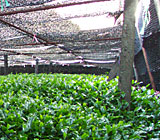
Lore
In Japan, tea is typically grown in two ways. The first is uncovered, which is similar to how most teas are grown. This method results in teas like Sencha, Bancha, and Hojicha. The other method is shade grown, which results in teas used for Matcha, Tencha, Gyokuro, and Kabuse. So, what’s the difference between them? It all depends on how long the tea is covered, with Matcha and Tencha teas covered longest, then Gyokuro, and finally Kabuse. Shade grown teas are known for their increased chlorophyll, theanine, and amino acids, and are considered some of Japan’s finest teas.Raw Honey for Green Teas
Soft floral notes of this raw honey pair deliciously with the lively, fresh character of green and white teas.
12oz
honey for green tea
$9
Questions and Answers
Ask a question about gyokuro and have the Adagio Teas community offer feedback.
How does Gyokuro compare to sencha(overture) in taste?

Asked by Chad Thompson
on January 25th, 2020
on January 25th, 2020
1
VIEW REPLY
HIDE REPLY
How much water is needed for proper brewing? I've been using 8 oz per packet, but some teas seem very weak.

Asked by Rebecca M
on July 3rd, 2020
on July 3rd, 2020
2
VIEW REPLIES
HIDE REPLIES
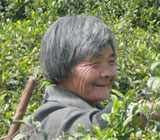
Direct Trade Advantage
We import directly from the artisan farmers whose names and faces you'll find throughout our website. This makes our products fresher than those offered by the companies who use middlemen and brokers, and also less expensive. Here's a comparison of how much more you'd be paying by buying this elsewhere:
Teavana:
90% more expensive
David's Tea:
90% more expensive
Meet our gyokuro farmer, Nagashima Takehisa
To ensure the best quality and value, we import our teas directly from the countries in which they are grown, working closely with the farmers who tender them. Our Roots Campaign connects our customers with the rich stories and the farmers behind some of our most popular teas.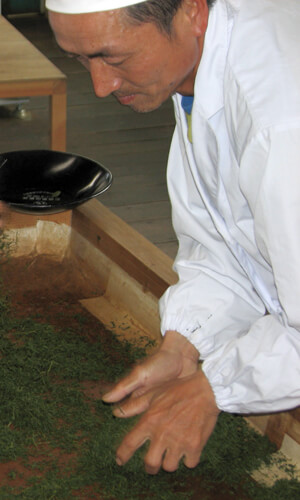
How long have you been growing tea?
“About 50 years. I have been involved in agriculture, especially in green tea fields ever since I graduated from an agricultural high school.”
What got you started in the Tea industry?
“I was the firstborn son of a green tea farming family, so it was a natural choice. Mainly I have been growing green tea, and I also grow Gyokuro.”
Can you describe a typical day out in the field. How many hours would that be?
“To growing Gyokuro, we start out by making shade coverings called "Komo" which is made of black polyester mesh. When green tea bushes' buds start coming out in April, we start putting covering on the frames over the tea bushes. After about 10 days, we cover with two layers, and cut the sun rays by 95%, and we pick them in 20 days.
We pick them by hand, so an adult could only pick 10kg of tea leaves working from 6AM till 6PM. Then finished tea will come out only 2kg. We cannot pick tea leaves on rainy days. After air-dry the leaves in bamboo containers, we start processing them 5AM next morning.”
We pick them by hand, so an adult could only pick 10kg of tea leaves working from 6AM till 6PM. Then finished tea will come out only 2kg. We cannot pick tea leaves on rainy days. After air-dry the leaves in bamboo containers, we start processing them 5AM next morning.”
You'll Also Enjoy
sencha premier
30¢ / cup
score: 94
genmai cha
17¢ / cup
score: 94
